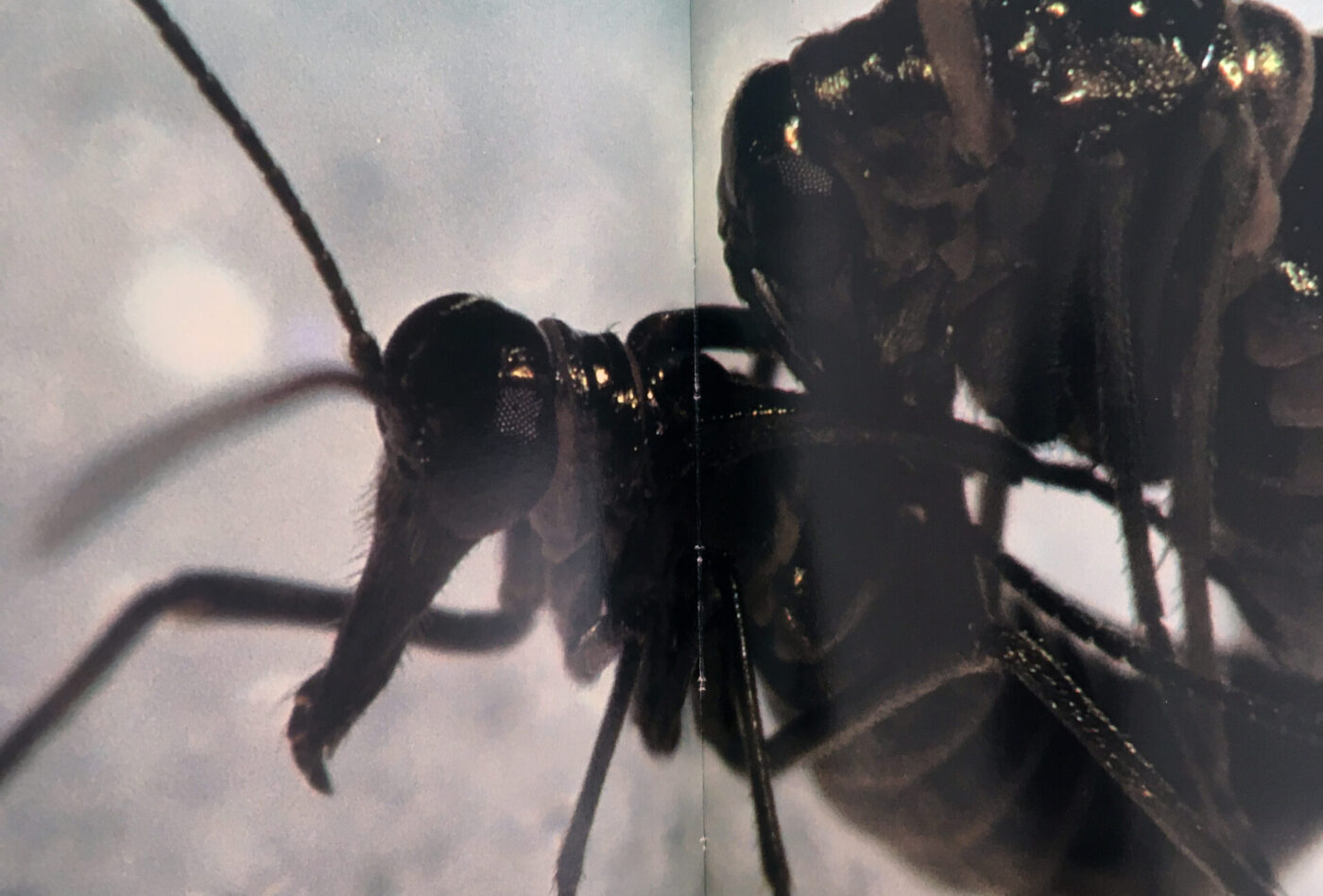
Élise Lafontaine
Dornach Pillars
04.06–05.06.2023
Room 2
04.06–05.06.2023
Room 2

Opening
Thursday April 6, 6pm
Artist
Élise Lafontaine
Eyes wide open, head down, hanging by a foot, one leg bent — the figure of the hanged man appears. Despite the ambiguity of this major arcana of the tarot, the soft gaze seems to convey self-determination, intuition and great concentration. Through reversal, the card invites to go past a heritage of illusions and projections, to lose one’s own reference points in favor of a change of perspective.
This impression of bewilderment seems to be sought by Élise Lafontaine as she enters closed spaces, identifiable edifices, their representative and functional architecture covering a reality of their own. These spaces were built to contain, confine or isolate. Prisons, psychiatric hospitals, caves or monasteries — they hold power and knowledge, belief systems, sustained by the State, or spiritual and ideological institutions. Like the Goetheanum in Dornach, Switzerland, which Élise Lafontaine visited last — a structure constructed to be a total “embodiement” of the anthroposophical thought.
The recognition of the site passes by processes of identification and anchoring to perhaps end in a kind of communion. Like a pendulum, the artist takes the measure of the architectural and vibratory space, immerses herself in its spatiality, oscillating between perception and sensation until she abolishes the distance between them: "the strange sensory experience contributes to a feeling of dissociation from reality and the movements of my limbs fill the space in a disproportionate scale ratio.” Élise Lafontaine captures the carrier system as well as the infiltrating light rays. Her body, activated by the pictorial gesture, becomes a "synesthetic commutator". It is the vehicle allowing the translation, like a delicate transfer of relics, of which the Latin root translatio indicates both the transport and the translation. To these "remains" is added a quantity of metaphysical and mystical information, invisible and intangible.
From each visited location, characteristics are added to the paintings. Here, curves and columns structure the marouflaged canvases. Female organs, entrails of concrete — their representativeness is not confined to a single register, nor to their affinity with the works of pioneers of abstraction such as Hilma af Klint (1862-1944) or of concrete art such as Zilia Sánchez (1926). The layers of sandblasted paint reveal the armature of silhouettes, as though filtered by bioluminescent gleams. They are presences. Like the “women statues”, the column paintings of Élise Lafontaine indicate the entrance as much as they redefine the exhibition space — another circumscribed place — as a passage.
If the canvases function as a device of monstration and orientation, Élise Lafontaine reverses them. In the process, she turns her paintings upside down and thus plays with directions, as if to distance herself from the inhabited places or to emancipate herself from identifiable forms. In doing so, she lays the moving foundations of another architecture, born of disorientation : “Disorientation opens a space of difference, between here and there, public and private, profane and sacred, strange and familiar, and so on”.
— Marie DuPasquier, curator of the exhibition
1 Élise Lafontaine, Archives, Centre d’art et de diffusion CLARK, 2023, p. 50, about her experience at the Lombrives Cave, France.
2 Sara Petrucci, « Le corps et la géométrie. Visualisations et transformations », in Nombres, rythmes, transformation. Dialogue contemporain avec Emma Kunz, Göttingen : Steidl, 2020 p.62, after Arnauld Pierre.
3 Agnès Varda, Les dites cariatides, film, 35mm, color, 13 min, 1984.
4 Marcella Schmidt di Friedberg, Geographies of disorientation, New York: Routledge, 2018, p.3, quoting Bernard Stiegler.
The artist would like to thank Marie DuPasquier, Centre CLARK, Atelier CLARK, Canada Arts Council (CAC) Pangée, Dominique Rivard, Graphiscan, Rembourrage Flyss, Le Griffon des bois, Frédéric Chabot, Martin Schop and Anne-Renée Hotte, Muriel Ahmarani Jaouich and Gilles Lafontaine.












